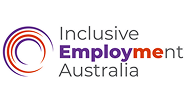Leading Disability Employment Services Provider says workplaces must do their best to educate employees that ‘not all disabilities are visible’
Disability discrimination accounts for the highest volume of complaints to the Australian Human Rights Commission annually[1]. This can potentially lead to those living with an invisible disability to decide to hide their condition from prospective employers in fear of discrimination and social stigma, according to leading Disability Employment Services experts atWork Australia. In order to create inclusive workplaces, the need for support, open conversation and businesses to see the ability in disability, has never been more important.
The International Day of People with Disability will be observed on 3 December, with the theme ‘seeing the ability in disability’. With this in mind, it’s key to note that not all disabilities are visible and therefore conversations should be widely encouraged, promoting empowerment and inclusiveness. Research shows that mental health conditions are at least twice[2] as prevalent than they were in non-pandemic circumstances. With another 700,000[2] Australians said to live with a brain injury and approximately 3.95 million[3] experiencing hearing loss, invisible disabilities are affecting more people each day.
“Invisible disabilities, or hidden disabilities, are those that are not immediately obvious including mental and/or neurological conditions, impairments to the senses, chronic pain and issues that restrict movement,” says Shaun Pianta, atWork Australia DES Ambassador & Disability Awareness Trainer. “For example, people who live with a mental health condition may not ‘appear’ to have a disability but much of their daily life is affected by their condition. It’s the same with chronic pain, or diabetes. As a result of these conditions not being instantly apparent, this can lead to a multitude of misconceptions, judgements and sadly, discrimination,” he adds.
In a recent study on the people who experience the highest rate of employment restrictions, those living with ‘invisible’ disabilities reported highest, with 91%[4] experiencing mental ill health, 88%[6] for emotional and nervous conditions and 78%[6] experiencing chronic pain.
Sharah Smith, a client of atWork Australia lives with depression and anxiety which at one point led to a severe social phobia and agoraphobia. “I was unable to leave my house alone, and even if I had company to help me, the anxiety would be unbearable. I was beginning to be unable to go grocery shopping. I lost contact with friends which led to loneliness and increased depression,” says Sharah.
“The fact that I couldn’t leave my home made it incredibly hard to even consider employment, and I worried that while people are usually understanding, some may still judge and think that I was ‘lazy’ or needed to ‘get over it’. When I began speaking with atWork Australia however, I began to trust them and the process due to their understanding of my illness.
“I eventually became comfortable around my Job Coaches who encouraged me to try new things, like going to appointments and catching public transport alone. I attended a resilience group atWork Australia hosted and regained some of my social skills. They also referred me to counselling and coached me before interviews, even driving me to meetings and my first day of work. They also helped me gain my licence, which was a requisite for my current job,” Sharah adds.
Business leaders have a pivotal role in educating themselves and their employees on the benefits of employing someone living with disability and changing the focus to seeing the abilities that these workers bring to their roles. In celebration of the International Day of People with Disability, the Department of Social Services has produced a number of resources[5] which can encourage workplaces to promote and acknowledge the achievements and contributions of people with disability. While many organisations will still be working remotely, businesses can get involved online, celebrating staff members who may be living with disability and inspiring other staff members to join in the conversation.
Beyond supporting those living with disability, businesses also gain a lot of benefit from creating inclusive workplaces, as research shows that in 9 out of 10 cases (90%)[6], employees with disability, injury or health condition are as, or more, productive than their peers and almost the same number (86%)[7] show superior attendance.
Disability Employment Services, an Australian Government initiative delivered by atWork Australia, aims to support businesses by offering bespoke inclusive recruitment advice (from development of position description through to retention of staff) based on their needs, and to connect them with job-ready candidates. atWork Australia works with prospective employees to prepare them for interviews, while assisting employers with the hiring and onboarding process through screening candidates based on skills, abilities and organisational fit. Once in place, the provider continues to monitor the placement and offers assistance to both employer and employee over the first year, and beyond if required.
“I now actually work for atWork Australia and love my job,” says Sharah. “While I still struggle with tasks such as making phone contact with clients when there are other people in the room, my experience as a client and living with an invisible disability has benefited both myself and my clients, as I am able to empathise with their situations and service them in a way that helps their progress.”
“Our aim is to shape a society and the future of work, that is inclusive for all people living with disability, injury or a health condition,” says Shaun. “That starts by recognising that not all disabilities are visible and that no matter the condition, we need to remove stigma to create better relationships for all,” Shaun concludes.
Watch our Q&A on Invisible Disability hosted by Disability Employment Services Ambassador, Shaun Pianta and atWork Australia’s National Employment Engagement Manager, Penny Evans.
For more information, please visit https://staging.atworkaustralia.com.au/des
[1] https://www.humanrights.gov.au/sites/default/files/2019-10/AHRC_AR_2018-19_Stats_Tables_%28Final%29.pdf
[2] https://www.mja.com.au/journal/2020/mental-health-people-australia-first-month-covid-19-restrictions-national-survey
[3] https://www.hcia.com.au/hcia-wp/wp-content/uploads/2020/02/Hearing_for_Life.pdf
[4] https://www.safeworkaustralia.gov.au/system/files/documents/1702/arepeoplewithdisabilityriskatwork_review_2007_rtf.doc
[5] https://www.idpwd.com.au/resources/
[6] Visit www.jobaccess.gov.au for more information
[7] https://www.comcare.gov.au/__data/assets/pdf_file/0003/127425/Disability_in_the_workplace_PDF,_71.9_KB.pdf


